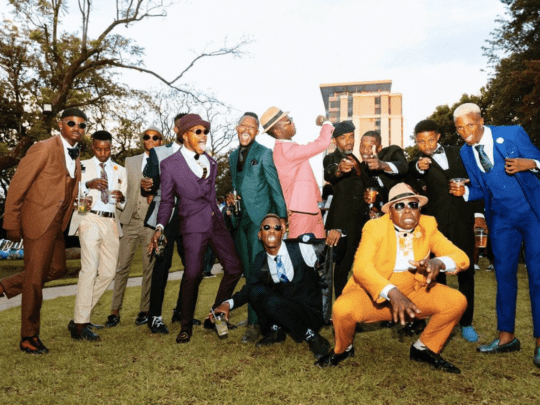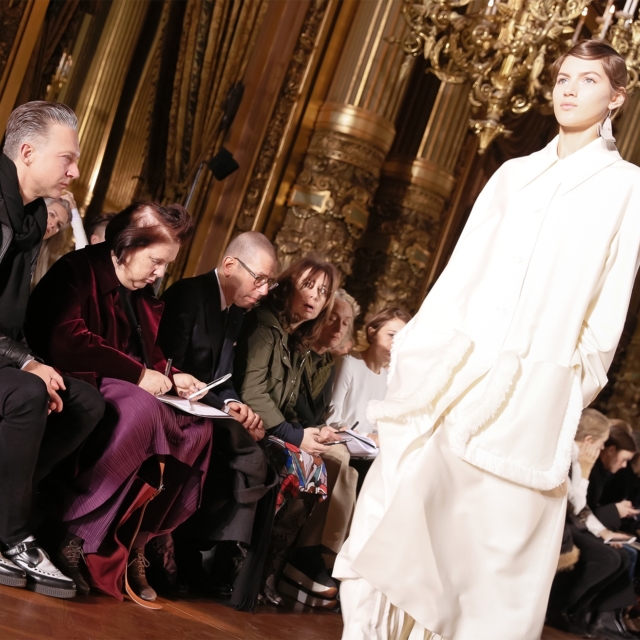In 2015, Olivier Roustieng announced to the New Yorker that, thanks to Instagram, fashion critics were irrelevant. “I can speak straight to my Balmain army, instantly, and I am making fashion for them,” he said. “It is too bad for critics if they cannot understand this, but the truth is now that their critiques do not matter.” Txampi Diz, the KCD PR director for Balmain, disagreed. Diz was diplomatic. Rousteing was right.
Fashion critics aren’t dead, they’re just talking to themselves in an empty room. Consider how many writers have taken a metaphorical shit on Yeezy season after season. The clothes still sell. While social media has allowed brands to become more like sports franchises (in that they can build a legion of fans who create hype all on their own—label whores with loyalty, if you will), the truth is that written fashion criticism has been on the decline as far as influence is concerned since publications moved online, and there are two primary reasons this has happened.
The first is that images from fashion shows are posted immediately after said shows take place—much faster than a reviewer can write about them. The viewers have already made up their minds on the collection before any expert can craft an argument. This isn’t exclusive to the fashion industry—thanks to streaming services it has been easier than ever for general public to make up their minds about music and television too.
When asked if music reviews matter anymore, Ed Droste (of the band Grizzly Bear) told the AV Club: “No! I mean, I don’t care. I’m going to check out what I want to check out, and I’ll decide for myself.” He later added, “I can’t even remember when a review negatively affected my perception of an album. It’s only ever been positive reviews that steered me toward things. I think that’s generally how it goes. I don’t think people these days are like, ‘Oh shit, some 35-year-old white dude doesn’t like this album. I’m not going to listen to it!’ Usually people only look at the score, and eventually it pops up on a playlist and they’re like, I do like this. And they’ll have completely forgotten about the review.”
The second reason fashion criticism has changed is that advertising bucks mean more now than ever. Slowly, critical publications have become wary of doing anything to piss off the brands that pay them. There’s a reason you rarely read negative reviews anymore, and it has ultimately made editors look spineless. So not only do people not want to read two paragraphs about something they can see for themselves, they also don’t want to read two paragraphs of bullshit.
Does this mean fashion criticism should go away? No. As we’ve seen over the past year, the fashion media has had enormous success in translating how society perceives clothing. Not that writers haven’t been doing this for decades, but there has been a very recent pivot in how they have used their authority to speak to non-fashion followers about the importance of what we wear and why. But that’s big-picture. When it comes to fashion week reporting, we need to embrace new, inventive ways to communicate what designers are doing.
One idea? Inform what can’t be Instagramed. Critics are in a unique position to actually be in the presence of the clothing, and materiality is an important part of fashion. This is especially true considering the bright lights of the runway and the flattening nature of photographs can make cheap plastic sequins look like imported glass beads. While discussing the aesthetic nature of a collection is important, so is the technical aspect of design. Don’t let a good showman get away with bullshit.
To that end, don’t pretend to be a critic if you’re not going to be critical. While everyone is entitled to her personal taste, that doesn’t mean that everything is equally well executed. As the New York Times’ Dwight Garner wrote in regards to literary critics, it’s not helping anyone in the long run to not actively be discerning. “What we need more of,” he writes, “are excellent and authoritative and punishing critics—perceptive enough to single out the voices that matter for legitimate praise, abusive enough to remind us that not everyone gets, or deserves, a gold star.” This is especially so for the fashion industry, which increasingly wants to be considered an art form. And honestly, if someone can’t be critical when something is bad, why should we believe him when he says something’s good? The inability to be critical renders fashion journalism useless, and turns every piece into an advertisement, rather than a documentation of what’s going on and why.
Another thought: Embrace the cadence of the internet. Not to pat FU on the back, but I was rather proud of editor-in-chief Katharine K. Zarrella’s idea of writing bulleted “Show Notes” (inspired by the stream-of-consciousness notes editors take as they watch shows) rather than traditional paragraph-format reviews. The concepts molds to what has become a hallmark of online writing—quick, listed, unfussy, fun. Much like Netflix has changed the way people watch TV, Buzzfeed has changed the way people read online. That sounds sadder than it is—FU hasn’t compromised on quality of writing just because of a change in formatting (if anything, I’ve been able to write more easily, and faster).
Finally, challenge your reader. It’s 2017, and one no longer needs to be an insider to be an expert. Of course there are basic aspects of a brand’s history and evolution that should always be brought up, but go the extra mile and ask readers questions that attempt to engage their opinions, rather than trying to change them.
For the past few years, the industry has been dealing with the rapid shift of technology, social media, and the Internet in general. It’s not that it is reluctant to change (given the nature of fashion, that would be rather hypocritical), it’s just that figuring out the best course of action takes time. But if the blogger bubble of the early 2000s has taught editors anything, it’s that there is still a hunger for thoughtful, professional fashion writing online.






